As the Toronto Zoo celebrates its 50th anniversary, it’s important to recognize that it is much more than just a place to observe wild animals; it’s a dedicated conservation facility focused on preserving wildlife and educating the public. From its state-of-the-art animal hospital to its commitment to accessibility and volunteer programs, the Toronto Zoo stands as a beacon of hope for animal conservation.
A Commitment to Conservation

As a frequent visitor and member of the Toronto Zoo, the importance of conservation is clear from the moment you step through the gates. On this occasion, it began with a heartfelt “Thank you for supporting conservation,” setting the tone for a visit that goes beyond mere entertainment. This reminder reinforces the idea that every entry fee contributes to preserving wildlife and supporting the zoo’s vital mission.
The staff at the entrance are the first touchpoint for visitors, and their role is crucial. If they consistently remind people of the zoo’s mission and guidelines to respect the animals, it would significantly enhance the experience for both visitors and the animals. On a previous visit, one zookeeper aptly put it: “if the zoo was treated like a library, it would be better for the animals.” Indeed, a quieter, more respectful atmosphere would undoubtedly be less stressful for the zoo’s inhabitants.
Success Stories in Conservation
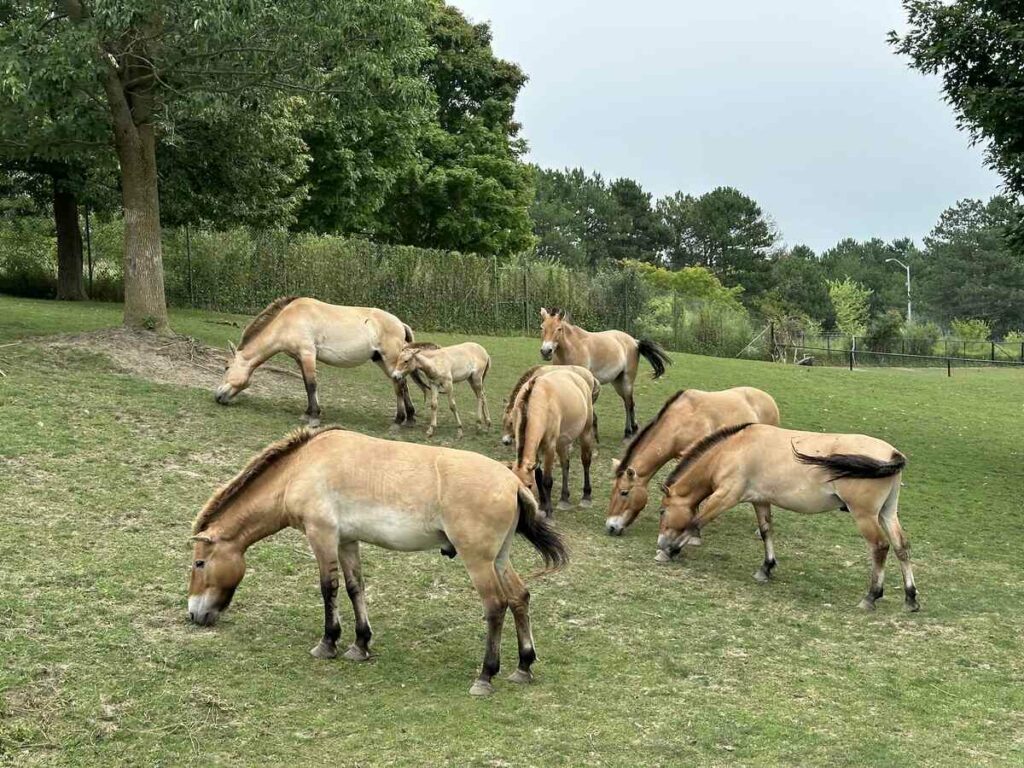
The Toronto Zoo has been instrumental in improving the populations of several endangered species. Here are some notable success stories:
- Przewalski’s Horse (Mongolian Wild Horse): Once declared extinct in the wild, the Przewalski’s horse has made a remarkable comeback thanks to breeding programs and reintroduction efforts supported by the Toronto Zoo. These majestic horses can now be seen roaming their native habitats in Mongolia once again.
- Golden Lion Tamarin: These small, brightly colored monkeys were on the brink of extinction in the 1970s. Through collaborative efforts, including those of the Toronto Zoo, their numbers have significantly increased. The zoo has participated in breeding programs and habitat preservation initiatives to ensure the survival of this species.
- Black-Footed Ferret: Native to North America, the black-footed ferret was once thought to be extinct. The Toronto Zoo has played a key role in breeding and reintroduction programs, helping to restore their populations in the wild.
- Vancouver Island Marmot: As one of Canada’s most endangered mammals, the Vancouver Island marmot has benefited from the zoo’s conservation efforts. Breeding programs and habitat restoration projects have helped increase their numbers and improve their chances of survival.
- Wood Bison: The Toronto Zoo has been involved in efforts to conserve the wood bison, a subspecies of the American bison. Through breeding and reintroduction programs, the zoo has contributed to the stabilization of their population in Canada.
The Animal Hospital: A Sanctuary Within a Sanctuary

The Toronto Zoo boasts an impressive animal hospital that plays a pivotal role in its conservation efforts. This facility is equipped to handle everything from routine check-ups to complex surgeries, ensuring that the animals receive the best possible care. The hospital not only cares for the zoo’s residents but also contributes to global conservation efforts by participating in research and rehabilitation programs.
An interesting fact is that the zoo’s parking fees help cover the costs of feeding and caring for the animals. So, when you pay for parking, you’re directly contributing to the well-being of the zoo’s inhabitants.
Puppe and the New Orangutan Pavilion
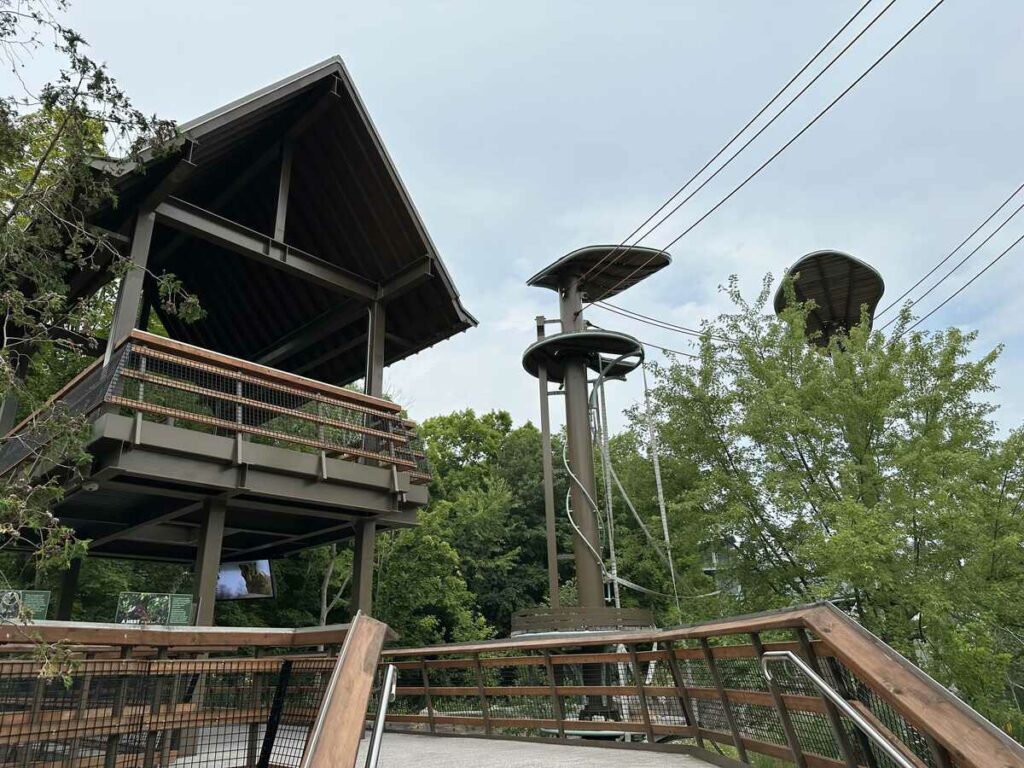
One of the highlights of my regular visits has been seeing the new outdoor pavilion for the orangutans. This space is a significant upgrade, providing the orangutans with more room to explore and engage in natural behaviors. Puppe, the matriarch of the group, was the brave pioneer who ventured into the new space, showcasing the zoo’s dedication to enhancing the lives of its animals.
Zoomobile: A Great Way to Explore
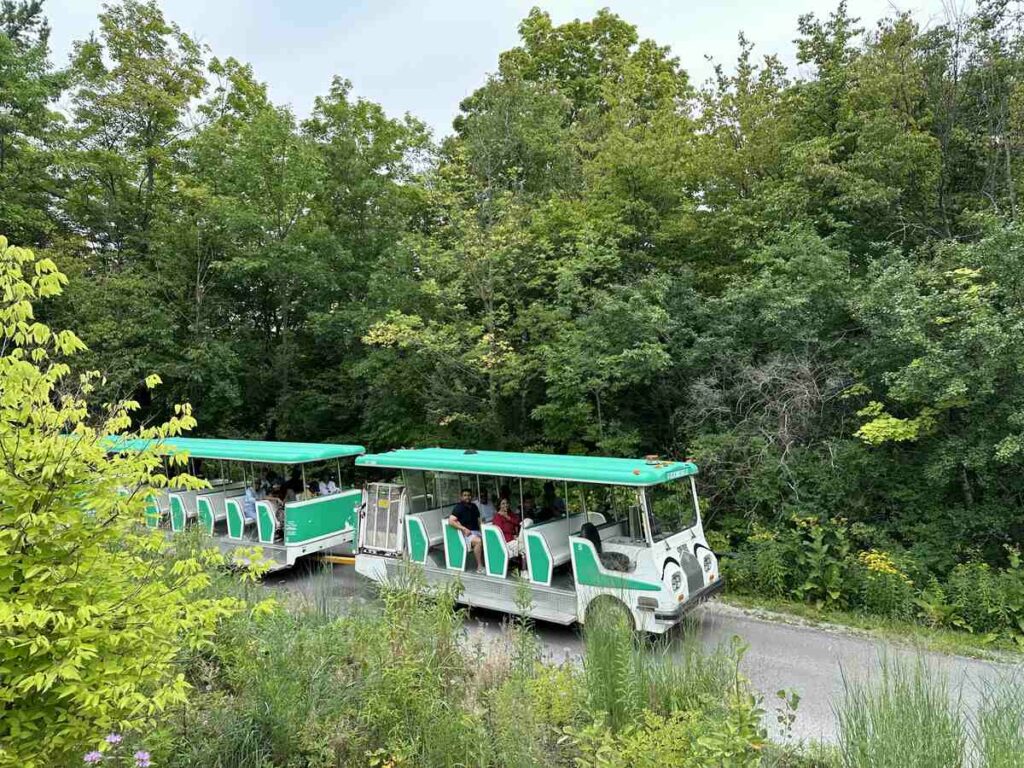
With a place as vast in both land and knowledge, it can be daunting for some guests. The zoo mobile (upgraded from the old monorail some guests may remember from zoo trips in the 80s) transports guests around an exclusive behind the scenes tour of the park, enriching guests in up close visuals of favourite animals, scenic view of the Rouge Valley the zoo is situated upon and as well knowledge of the animals.
The Zoomobile can be accessed at the entrance of the park with a purchased ride ticket. Members ride for free. A highlight of the Zoomobile ride is the quirky puns from the guides. I won’t ruin it for you, but I can assure you that they are delightfully silly. It’s an excellent way for visitors to learn more about the zoo while enjoying a comfortable ride. There are stations accompanying each pavilion of the park, making the zoo mobile like its own transit system.
Fun Activities for Kids
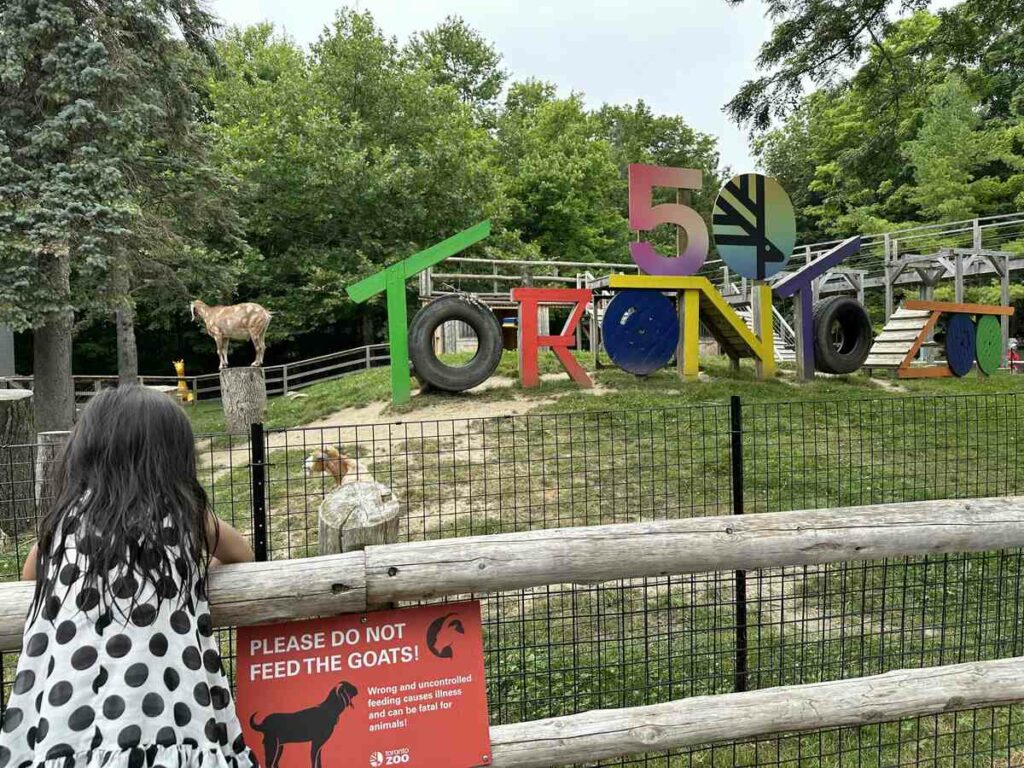


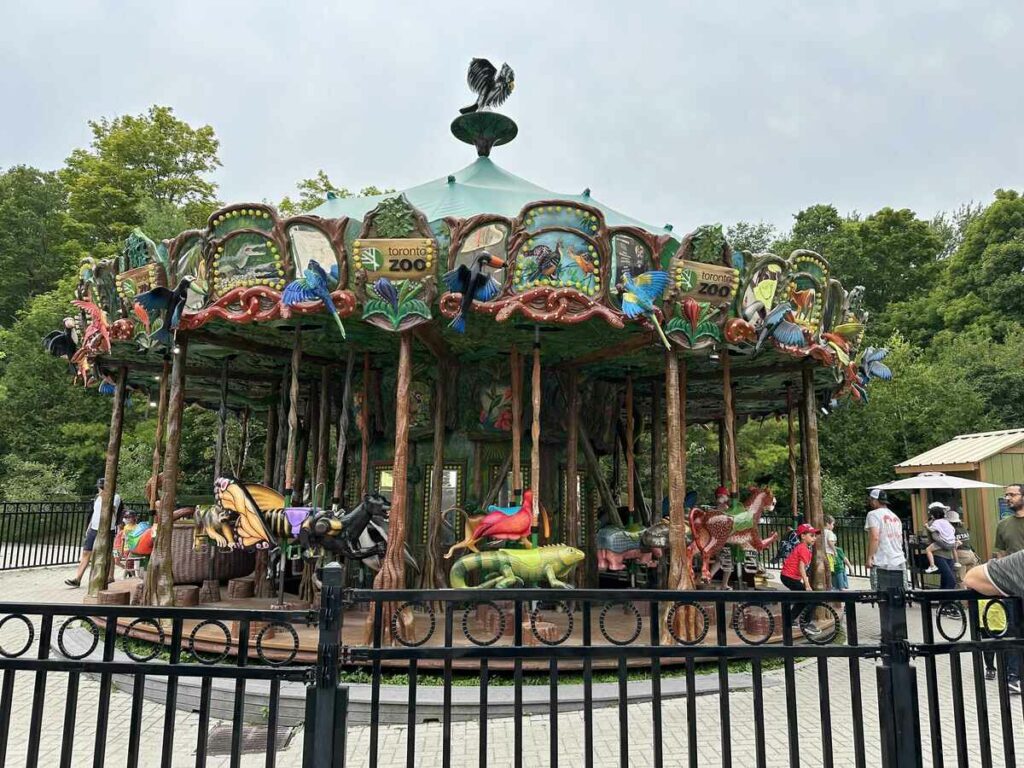

The Toronto Zoo offers a variety of fun and entertaining activities for children to enjoy. Face painting, caricatures, and henna are available at two locations: inside the main entrance area and near the Tundra Trek. Splash Island is a perfect spot for kids to cool off. It is located close to the Kids Zoo area, which offers interactive and educational experiences for young visitors. Just past the main gift shop and before Splash Island, there is a section where goats run around, providing an engaging experience for children and the goats alike! There’s also a charming carousel in the same area that kids will love.
For thrill-seekers, the Tundra Trek features a seated zip line, though it does have a height restriction and emits a loud whoosh sound at the end, which might be challenging for those with sensory issues.
Speaking of sensory issues, the Toronto Zoo has partnered with Kulture City to provide sensory packs that include sunglasses, noise-canceling headphones, fidgets, and a map showcasing quiet areas in the zoo. These packs can be collected near the Zoomobile main entrance (close to the front entrance), ensuring that all visitors can have a comfortable and enjoyable experience.
The Volunteer Program: Making a Difference
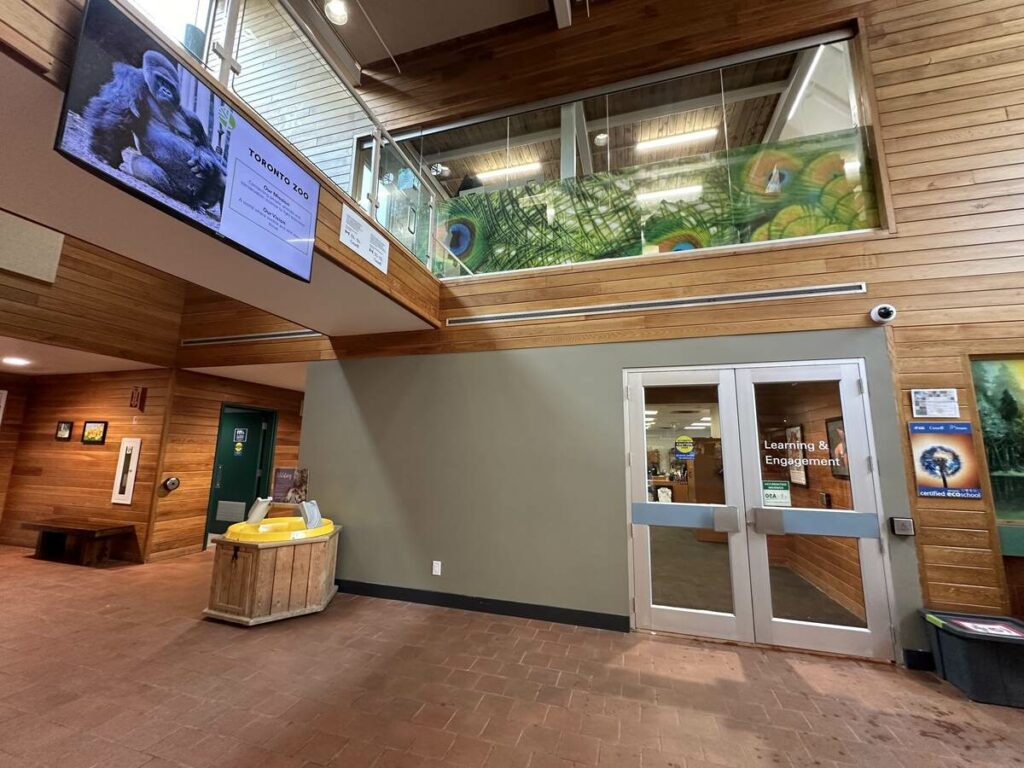
The zoo’s volunteer program is another cornerstone of its conservation efforts. Volunteers play a vital role in educating the public, assisting with events, and supporting the zoo’s various programs. These dedicated individuals contribute countless hours to help the zoo run smoothly and achieve its mission. If you’re passionate about wildlife and conservation, volunteering at the Toronto Zoo is a fantastic way to get involved. To learn more, head into the main gift shop building, the Learning and Engagement office is located next door.
Accessibility for All

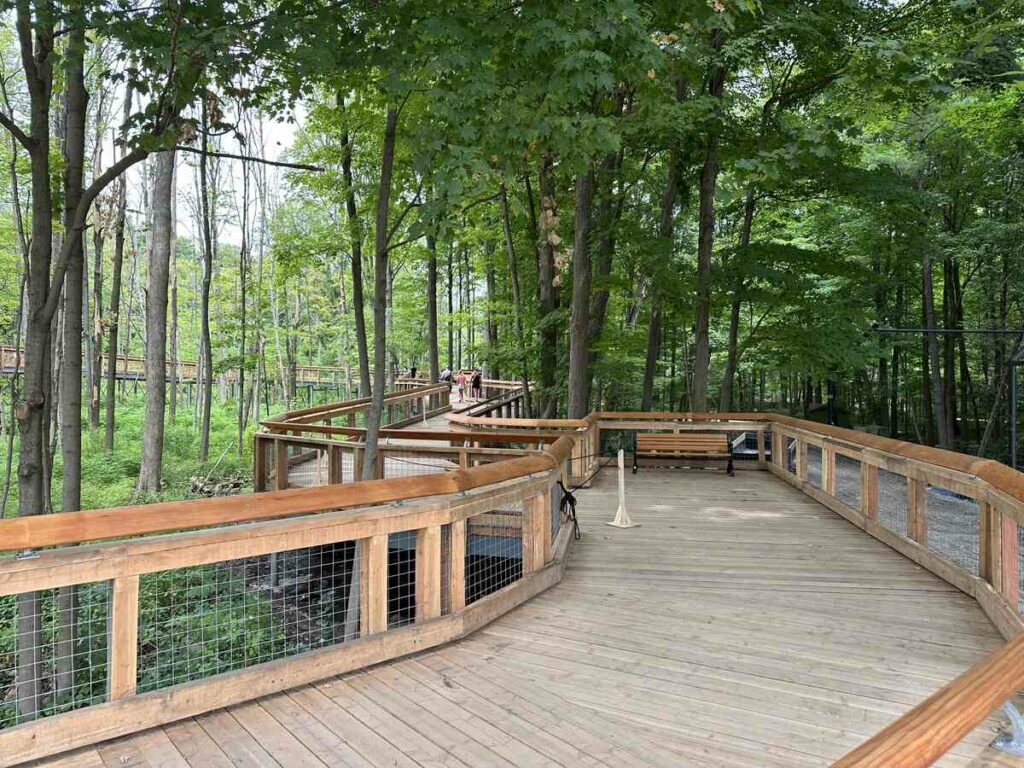
The Toronto Zoo is committed to making its facilities accessible to everyone. The zoo offers a variety of services to ensure that all visitors can enjoy their experience. This includes accessible pathways, rental of wheelchairs and scooters, and sensory-friendly resources. The zoo’s dedication to inclusivity ensures that everyone can experience the wonder of wildlife.
New Accessible Boardwalks
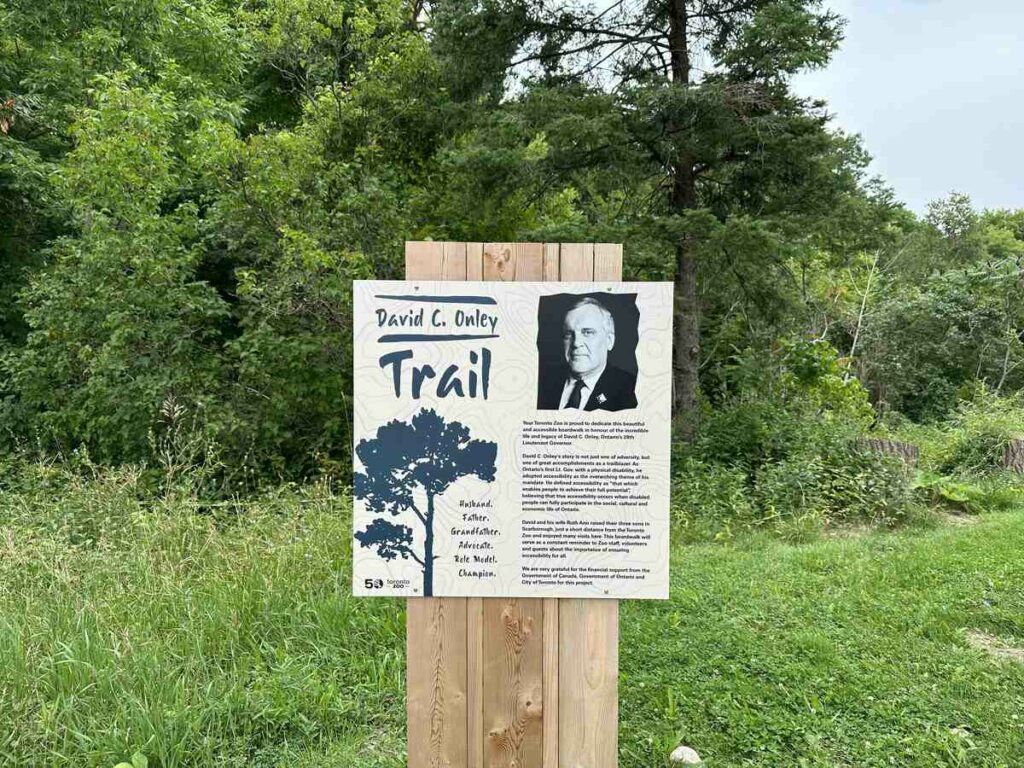
The additions of the two boardwalks have greatly enhanced the visitor experience by providing improved viewing opportunities, especially for the renovation of the Sumatran Tigers’ habitat, which is still under construction. One of these boardwalks is named after David Onley, the former Lieutenant Governor of Ontario, in recognition of his advocacy for accessibility and inclusivity. Both boardwalks are designed with accessibility in mind, ensuring that all guests can enjoy the new features. This construction project underscores the zoo’s commitment to continuous improvement and innovation.
A Rich Legacy
The Toronto Zoo has come a long way since opening its doors in 1974. Its history reflects a steadfast commitment to conservation and education. As one of the largest conservation zoos in the world, spanning over 710 acres and housing more than 5,000 animals representing over 500 species, the Toronto Zoo is at the forefront of numerous conservation initiatives, including breeding programs for endangered species and habitat preservation efforts.
Tips for Maximizing Your Visit
To make the most of your visit to the Toronto Zoo while being mindful of the animals and the environment, here are some helpful tips:
- Plan Ahead: Check the zoo’s website for information on exhibits, feeding times, and special events. Planning your route can help you make the most of your day. Use this map to get you started.
- Arrive Early: The zoo opens at 9:30 AM. Arriving early allows you to see the animals when they are most active and avoid the midday crowds.
- Respect the Animals: Keep noise levels down and follow the zoo’s guidelines. Treat the zoo environment with the same respect as you would a library to minimize stress on the animals.
- Experience a Wild Encounter: This is an opportunity to get up close to some of your favourite wild animals at the zoo guided by a keeper (Guardian of the Wild) This is an additional fee, click here for more information.
- Stay Hydrated and Wear Comfortable Shoes: The zoo is large, so bring water and wear comfortable walking shoes to stay energized throughout your visit. There are water refill stations available.
- Bring or Buy Lunch: There are many picnic areas throughout the park where you can enjoy your meal. If you prefer to buy food, the zoo has two Tim Hortons locations, a restaurant in the Africa and Tundra sections, as well as BeaverTails, Smoke’s Poutinerie, and a variety of food and beverage trucks.
- Use the Zoomobile: Take advantage of the Zoomobile for a guided tour that provides educational insights and a comfortable way to navigate the zoo.
- Volunteer Opportunities: If you are passionate about conservation, consider joining the zoo’s volunteer program. It’s a great way to contribute and learn more about the zoo’s efforts.
- Accessibility Resources: Utilize the zoo’s accessibility services, such as wheelchair and scooter rentals, to ensure a comfortable visit for everyone in your group.
- Support Conservation: Remember that your entry fee, parking costs, and any donations go towards the zoo’s conservation efforts. Consider additional ways to support, such as adopting an animal or participating in fundraising events.




As you embark on your travels, remember that our journey leaves an impact. Embrace eco-friendly accommodations, support local communities, and reduce plastic use. Respect wildlife by observing from afar and conserve resources like water and energy. Choose sustainable transportation, leave no trace behind, and participate in conservation efforts. Educate yourself and others about the environment you’re exploring. Let’s ensure that we tread lightly on our planet, leaving only footprints of kindness and taking home memories that inspire others to protect our beautiful world. Happy responsible travels!


